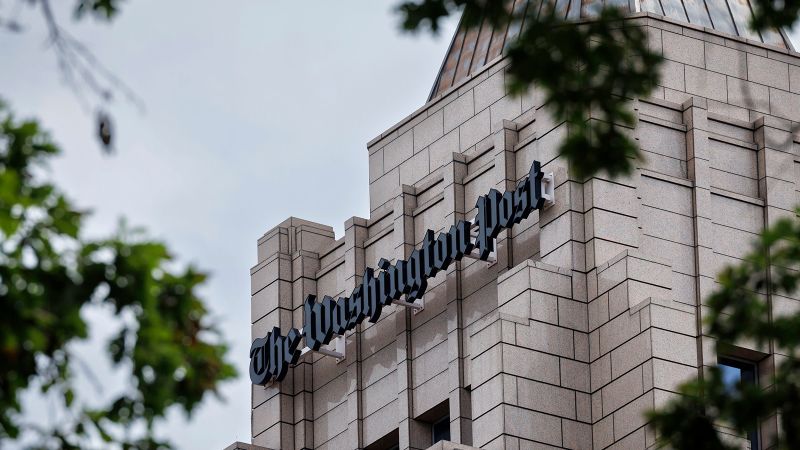The Washington Post is trying to fix one of its biggest problems: an outdated homepage loathed by its own staff.
The facelift is a key facet of Post publisher and chief executive Will Lewis’s plan to turn around the publication’s fortunes on behalf of owner Jeff Bezos This year the Post is forecast to lose about $50 million, an improvement over last year’s $77 million loss, but still an unsatisfactory result.
Lewis is under pressure to recapture paying subscribers and return the Post to profitability, a goal he says he is making progress on. In his weekly memo to Post staffers on Friday evening, Lewis called the updated homepage an “important step forward.”
Reporters and editors at the news organization have long grumbled about the drab and dated nature of the Post’s digital front door. Among the frustrations: The homepage featured relatively few stories at any given time and lacked a sense of cohesion. Staffers envied the homepages of rivals like The New York Times. Lewis acknowledged as much in his memo.
“Many of you have expressed your dislike of the previous version,” he wrote. “I agreed and encouraged you to improve it and you did just that.”
The new iteration, which launched last week, “is the beginning of several planned enhancements,” newly installed executive editor Matt Murray wrote to the newsroom.
The new homepage has double the amount of space for top stories — six slots instead of three — a muchwelcomed change.
“Section editors had been fighting to get their stories into those three featured slots, leading to a lot of frustration,” a Post reporter explained.
As part of the redesign, Opinion pieces have also been moved higher up on the page, while some sections like “Help Desk” and “Technology” have been dropped. Staffers said they expect further upgrades in the coming months.
Lots of people find Post journalism through side doors, like social media accounts and email newsletters, but the front door has become more important as social networks shut off the traffic firehose and Google integrates A.I. into its search results. More urgently, at the Post, the homepage redesign is a sign that the new management regime is moving quickly to make significant changes.
Earlier this summer, the paper also launched a new marketing campaign playing off its “Democracy Dies in Darkness” slogan with the catchphrase “Switch On,” in a bid to supercharge growth at the newspaper.
Lewis was appointed publisher and chief executive in January and didn’t mince words about the beleaguered state of the Post. His turnaround strategy was welcomed by many staffers, but morale plummeted in the spring when allegations resurfaced about his involvement in a UK phone hacking scandal coverup. (He has denied wrongdoing.)
While Lewis hasn’t entirely recovered, he has used his weekly memos to tout progress in rebuilding the Post’s subscriber rolls. On Friday, Lewis said “last week was our highest net growth week of the year for subscriptions and this ongoing growth is due to great teamwork across the company.”
A Post spokeswoman declined to specify the newspaper’s current number of digital subscribers. The most recent publicized total was 2.7 million.
Read the full article here
